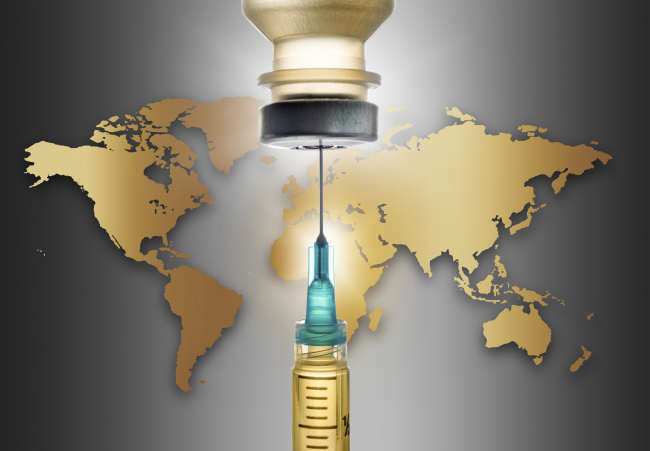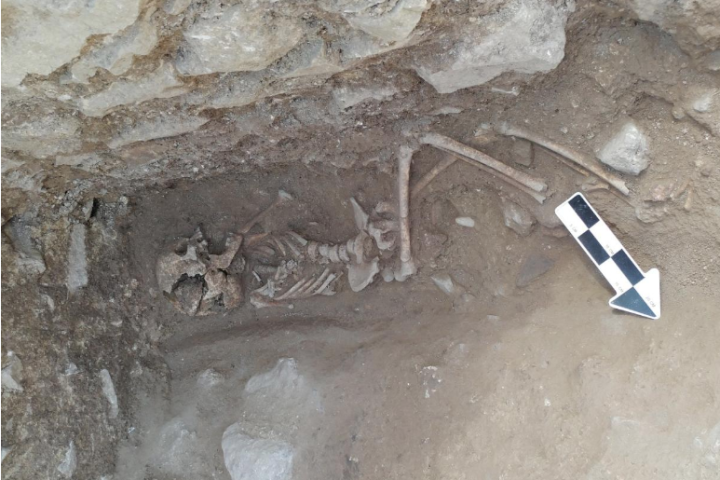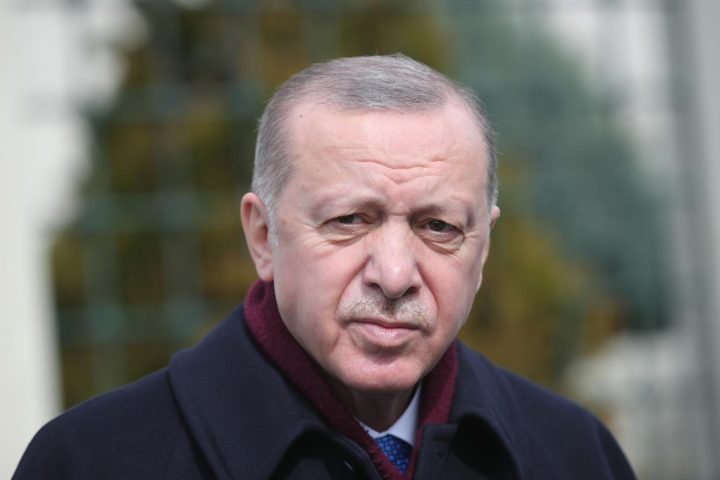The monkeypox virus continues to spread around the world. The UK, Spain, Portugal, Canada, Germany, France and the Netherlands are the countries with the highest number of cases.

Although the monkeypox virus, which was discovered in the 1950s, causes concern, humanity is not as helpless as with the coronavirus. Scientists say that the vaccine developed against smallpox, which once swept the world, provides up to 85 percent protection against this virus. It is even stated that those who once had a smallpox vaccine are immune to the monkeypox virus even today, although not very high.
Smallpox, one of the largest epidemics in history, was also the first disease to be eradicated by vaccination. But the process of finding this vaccine was not easy. Prof. Dr. Nuran Yıldırım, Head of the Department of History of Medicine and Ethics at Bezmialem Vakıf University Faculty of Medicine, told TRT Haber how the smallpox vaccine emerged and the story of the vaccine that ended the disease.
.jpg)
Vaccination from smallpox sores
Stating that the search for a cure for smallpox dates back to ancient times, Prof. Dr. Yıldırım says, “Human beings, who realized that those who had this disease did not get it again, realized that a mild smallpox occurred by rubbing the pus or crusts of smallpox wounds on healthy people and resorted to various methods for this.”
An example of this was tried in India. Between 3,000-800 BC, garbage soaked in smallpox sores was dried and applied to a scratch on the arm of healthy children. According to another method in China, the crusts that fell from smallpox wounds were ground into powder after waiting for a while and then blown into the noses of children.
Prof. Dr. Yıldırım states that this vaccine was later applied in North Africa and continues his words as follows:
“This vaccination, called variolation, was based on the principle of infecting a healthy person with pus taken from a smallpox wound by rubbing it on a superficial incision made on the body of a healthy person. However, the place where the incisions were inoculated varied from region to region.”
“Turkish smallpox vaccine”
European travelers saw in their travelogues that Circassians, Abkhazians and Georgians in the Caucasus vaccinated their little girls against smallpox. So much so that in the Caucasus, an abscess taken from a child with smallpox would be smeared on a scratch made on the invisible parts of six-month-old girls, covered with angelica leaves and wrapped with a piece of lambskin. “It is accepted that this method was brought to Istanbul by Caucasian slave traders,” Prof. Dr. Yıldırım said, explaining how the vaccine spread from Istanbul to the world:
“Lady Mary Wortley Montagu, the wife of the British ambassador, who saw the vaccination/variolation made with the virus/vaccine substance taken from human smallpox wounds in Edirne, describes her impression in a letter to her friend in England. Lady Montagu, who had her son vaccinated, worked for the promotion of this smallpox vaccine when she returned to England. Thanks to her relations with the royal family, the vaccine, which was tested on prisoners in 1721, was found to be successful and started to be applied by physicians. This method, which became famous with the names ‘Turkish style smallpox vaccine’ and ‘smallpox vaccine applied in Turkey’, spread from England to Europe and then to the whole world. The Turkish smallpox vaccine became the only hope of humanity against smallpox for 60 years.”
Another development related to the vaccine took place in England. British doctor Edward Jenner succeeded in producing a vaccine with a more reliable method. The Jenner method soon spread throughout Europe.
Vaccination in the systematic fight against smallpox
As in the rest of the world, vaccination efforts were also carried out in the Ottoman lands. The Ottoman Empire started the systematic fight against smallpox in 1840 with the Vaccine Administration, which started operations at the Mekteb-i Tıbbiye-i Şahane. Prof. Dr. Yıldırım describes the process of vaccination efforts in the Ottoman Empire as follows:
“With the first Vaccine Regulation, which entered into force on July 8, 1885, ‘vaccine martadetnamesi’ (vaccination certificate) started to be given to those who received smallpox vaccine. According to this regulation, children without a vaccination certificate would not be admitted to schools. Those entering government service, madrasas, military service and the police were obliged to be vaccinated. The production of smallpox vaccine was transferred to the Telkihhane-i Şahane (vaccination house, vaccination institute) established in 1892.”
After the Constitutional Monarchy II, Telkihhane-i Şahane was renamed “Telkihhane-i Osmani”. After the proclamation of the Republic, it continued to operate under the name “Istanbul Telkihhane”. Later, it was renamed “Istanbul Smallpox Vaccination Institution”. This was a modern vaccine institute. Every year, it produced 5-6 million doses of smallpox vaccine and distributed it throughout the country. Thanks to this, although there were occasional cases, there were no smallpox epidemics anywhere in the country. Nevertheless, smallpox vaccination was still compulsory during the Republican era with the Law on Public Hygiene, which came into force in 1933.

Vaccination worldwide
Prof. Dr. Yıldırım describes the measures taken in the world in those years as follows:
“In 1959, the World Health Organization launched a worldwide intensive vaccination program to eradicate smallpox. With these vaccination activities, the number of countries with smallpox was reduced to 16 in 1971. After consistent efforts to eradicate the disease, the World Health Organization declared smallpox eradicated globally on May 8, 1980. After smallpox was eradicated from the world, all countries stopped producing smallpox vaccine on the recommendation of the World Health Organization. Turkey also followed this recommendation and ended the production of smallpox vaccine, which had been in continuous production for 140 years since 1840.”
Although smallpox has been eradicated, all known smallpox viruses are kept under protection in laboratories approved by the World Health Organization.




